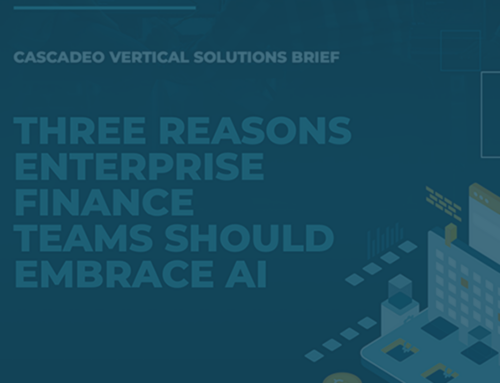
Applied observability is an emerging concept that pushes leaders to streamline and accelerate accurate decision-making via actionable, contextualized evidence derived from telemetry across customer touchpoints, infrastructure, applications, and every other source of information an enterprise is already collecting.
Applied Observability Can Accelerate Decision-Making
Modern technology allows us to know so much. GPS has long been able to tell us if there’s traffic ahead. Thermostats in some areas automatically adjust to municipal calls for energy conservation. Your car’s dashboard tells you with startling precision how much usability is left in its oil. Social media gives us the chance to determine, before we’ve even met someone, whether we want to show up for a first date. Once in a while, we even learn something we didn’t want to know. But in the long run, we have clearly chosen information over guessing, knowledge over hunch. We love a story where an instinct, a gut feeling, prompts a bold choice that leads to a win. But let’s be honest: those instincts fail as often as they succeed. That’s what makes them good stories. It’s long established that many people overestimate their own abilities and knowledge, and even when they don’t, a guess is a risk when there’s money on the line.
 A better story is the less legendary one: the leader who makes decisions driven by clear, actionable evidence provided by reliable sources and made legible via a proactive data strategy.
A better story is the less legendary one: the leader who makes decisions driven by clear, actionable evidence provided by reliable sources and made legible via a proactive data strategy.
Last week, we argued that data is the future of business. In the present, organizations with effective data programs are collecting, sorting, storing, and managing higher volumes of data than previously imaginable. Data strategy is a significant organizational need, and too often, data strategies are primarily reactionary instead of value-generating. Data security is essential, of course. But what is the point of all that data unless you’re going to use it to generate revenue?
Enter applied observability, an emerging concept that pushes leaders to streamline and accelerate accurate decision-making via actionable, contextualized evidence derived from telemetry across customer touchpoints, infrastructure, applications, and every other source of information an enterprise is already collecting. Observability provides clarity when patterns may not always be straightforwardly visible via monitoring, which alerts users to issues, using outcomes to build an understanding of the patterns in data that could indicate future issues, or simply inform decision-making on their own. In an applied observability strategy, various systems’ observable data is brought together and contextualized to provide a big-picture view that is applicable to teams across an enterprise.
Predicted by Gartner to be one of the key emerging technologies in 2023, applied observability involves a complex interaction of observable data from disparate sources across an entire enterprise. It begins with building observability into monitoring functions organization-wide, and then extends those observable outcomes into an integrated system of automated analytics to provide clear, evidence-based recommendations to dramatically shorten, and in many cases, automate decision-making across the board, resulting in improved internal workflows and customer experience.
An applied observability program is a major undertaking that may require long-term planning and incremental implementation. A DevOps practice and an excellent AIOps platform like cascadeo.io provide a solid foundation, with machine learning and automation driving a self-healing infrastructure and artificial intelligence facilitating meaningful insights from data. Such tools allow enterprises to begin building beyond observation and prediction toward evidence-driven decision making as an essential step in a larger data transformation strategy.




